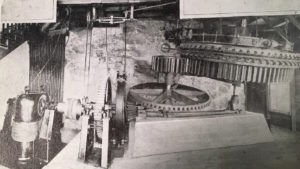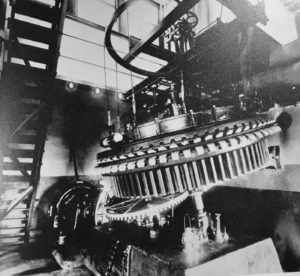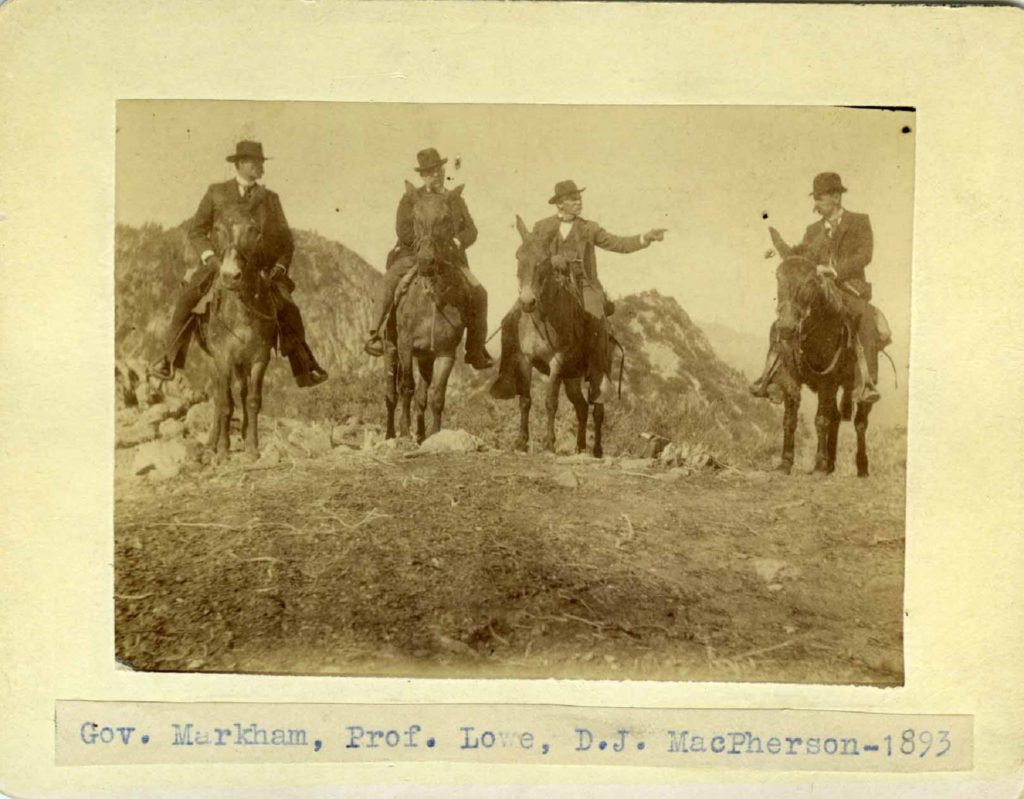The mountains above Pasadena were a well-traveled treasure for local Pasadenans, Angelenos and out of town tourists. Because hiking was a popular pastime in the 1890s, two local Pasadena men had purchased property on the top of Mt. Wilson, building a toll road and primitive overnight camping facilities for visitors who had hiked or rode burros to the top. This created an obstacle for Lowe and Macpherson because their planned route to Mount Wilson crossed through the camp. No amount of persuasion could get the owners to sell or lease the land.
A frustrated Professor Lowe asked Macpherson to come up with another suitable location for a hotel and a route for a cable funicular railway to access it. The engineer identified a second location, eventually to be named Echo Mountain – a level area at 3,200 feet elevation that could accommodate a hotel. This route could be extended to Oak Mountain, where another hotel could be built. This spot was soon re-named Mount Lowe by a group of Lowe’s friends, including the map-maker Andrew McNally.

Macpherson determined that while it would be difficult in a section or two and very steep overall, a funicular-style railway could be built up the eastern side of Echo Mountain from a base platform to be constructed in Rubio Canyon. But the additional challenge posed by the steep mountainside required additional expertise in cable car construction.

They approached Andrew Smith Hallidie, whose experience with wire ropes and suspension bridges led him to envision and build San Francisco’s famed cable cars that traveled up and down the hills via underground cables. Hallidie agreed to design the Incline’s winding mechanism. Read more about Hallidie here.
With financing, location and expertise in place, the partners were ready to go. Their starting point was Mountain Junction, located at the corner of Lake Avenue and Calaveras Street in Altadena.



